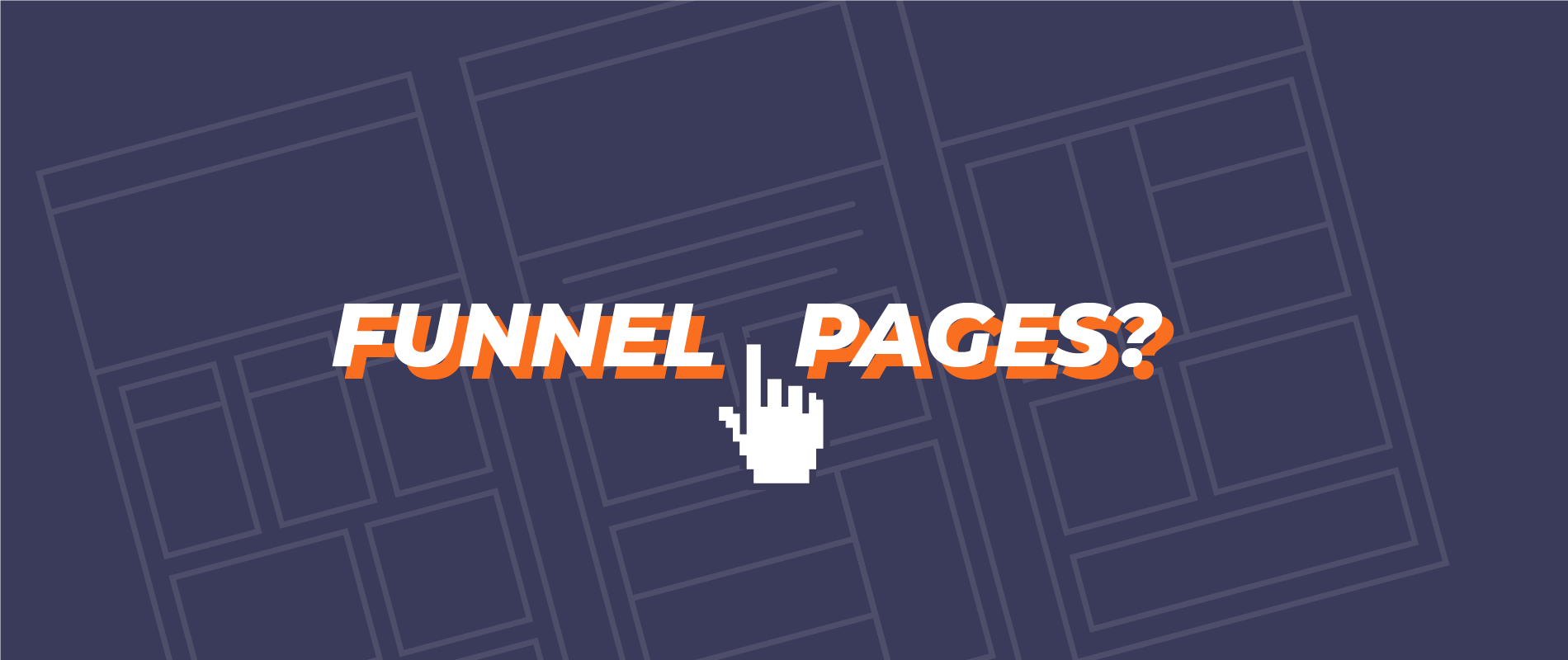Businesses create websites to attract visitors and convert them into customers. For that, a landing page is vital since its recommendation for action makes purchasing 86% easier, according to a Harvard Business Review report.
A funnel page is a separate web page that encourages a specific action like downloading an ebook, subscribing to a demo, or making a purchase.
Why sales funnel and landing pages are so important
Landing page funnels start the qualification process by categorising the visitors and then moving them through your funnel until they become customers. A landing page achieves this because it does not muck around–it shows the customers exactly what they need, as quickly as possible.
Create as many as 40 funnel pages to have seven times the lead generation of businesses with only 1 to 5 landing pages. They will give visitors valuable information quickly and efficiently. A poor site design will waste visitors' time searching for relevant information, and they will be off to a competitor's site.
-
2. Demographics
In inbound marketing, you provide valuable information in exchange for data from the visitor. Demographic data collected from the contacts can help you establish a better idea of who your visitors are and what their intent to buy is.
This information will help you qualify your leads before they go any further. You will understand and classify your leads, which helps you correctly answer their needs and pain points.
If you do not utilise this option, there is a real danger you will take the visitor through the wrong process, such as through automated sales funnel instead of direct to sales, leading them away from your website.
-
3. Data tracking
Website funnels and landing pages allow you to track and analyse page data such as bounce rate, time on page, and page conversion rate. It helps you understand visitor behaviour from the engagement with the various offers on the landing pages because people form an impression within 1/20th of a second.
Additionally, data tracking helps you run tests and optimisation. You can run tests on every element on the page, from the image to font style, and track the results to see what works for your visitors and avoid putting them off.
How to build your own lead opt-in page
A great opt-in page understands the buyer persona by identifying the visitors' pain points and challenges, and helps solve them. With that in mind, a great landing page optimises the following to fit the buyer persona:
- Headline
- Benefit
- Imagery
- Testimonial
- Offer
- Call-to-action (CTA)
Because of the limited period, you need to reinforce the following practices:
Remove distractions — that involves removing navigation, sidebars, and unnecessary links to help the visitor concentrate on completing the desired action.
Match the message — because the visitor followed the link from an advertisement, social media post, or email because it promised something specific, the landing page should deliver on that promise.
Fast loading page — since people only take 8 seconds before they lose concentration, make the most of it with quick page loading times to improve their experience.
Colour psychology — an often overlooked point, a good colour scheme will match your business style and encourage opt-in.
SEO optimisation — does not end with your website pages. It will help people find the solution that your offer provides. A short, catchy URL is also a nice touch as it makes it memorable to visitors.
Simplicity — avoid clutter, make it simple, and focus on the message. Avoid fancy fonts and concentrate on easing readability.
Convey your lead magnet as soon as possible — What is a funnel page if it cannot deliver the punchline immediately?
High-quality imagery — reinforces your brand quality and gains people's trust giving them the confidence to sign-up.
Clarity of CTA, offer, and benefits — make sure your opt-in page gives a clear direction to the opt-in page's purpose without any ambiguity.
Formatting — make a final sweep of the page to ensure it captures everything and at the right place.
Using thank you pages to generate demos
After the visitor has done what you asked of them, it is only natural to say thank you. Many websites miss the opportunity to be decent and make gains by using a "Thank You" page.
Apart from keeping your visitor engaged, a "Thank You" page presents a great opportunity to take them directly to what you think they need. It could be email nurtures, enticing offers, or valuable onsite content.
They are perfect for generating sales demos that show the visitor exactly what your product will do. The demo educates and demonstrates what pain points your product will solve. A survey showed 87% of buyers chose their vendor because they provided ample information. The demo helps your visitor make the decision to buy your product or keep engaging with you.
Keep your sales process moving with Klood
Understanding the importance of the visitor experience is the best way to approach great funnel pages. As a SaaS growth agency, we start off by helping our clients to understand what a sales funnel page is and how it can benefit their sales process. We’ll then work closely with you to create great funnel pages that make positive first impressions.
The Klood team of experts can help you to keep visitors on your website for longer, driving them towards the desired actions you’ve set out. Contact us and learn how to keep the sales process moving, build strong customer relationships, and convert website visitors into clients.
Further Reading - What's the difference between a sales funnel and a clickfunnel
Does your SaaS need a sales funnel?
Watch this video to learn more

Stay Updated with Our Latest Insights
Get expert HubSpot tips and integration strategies delivered to your inbox.



